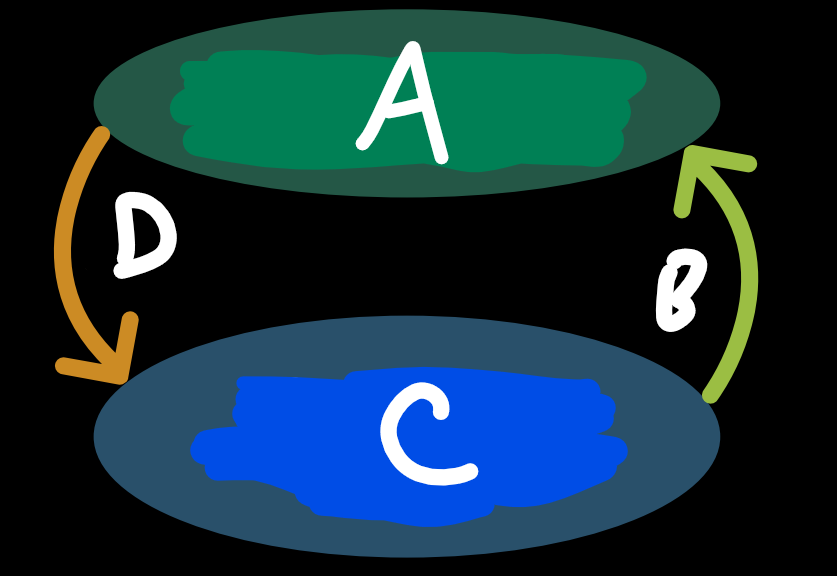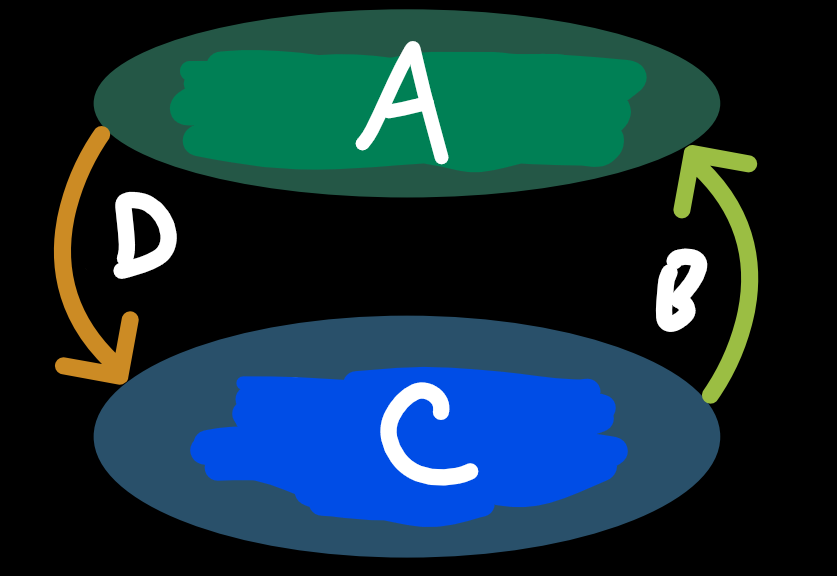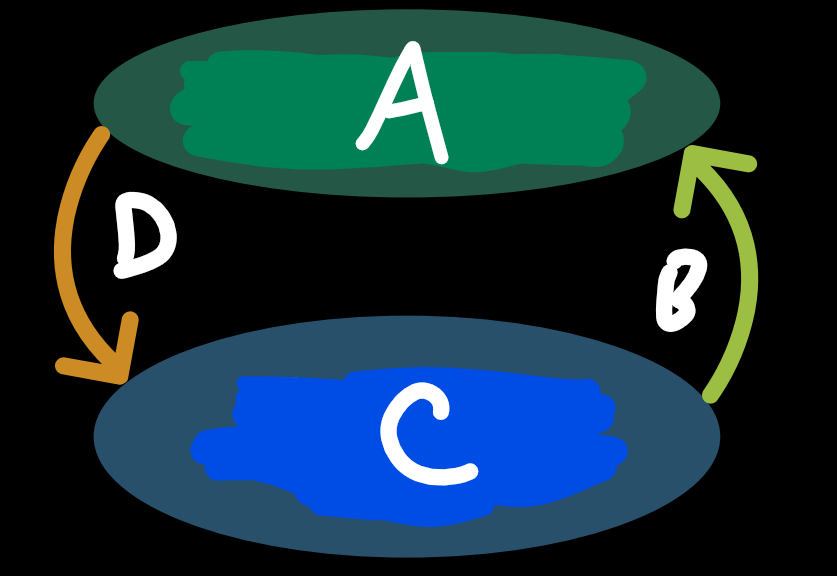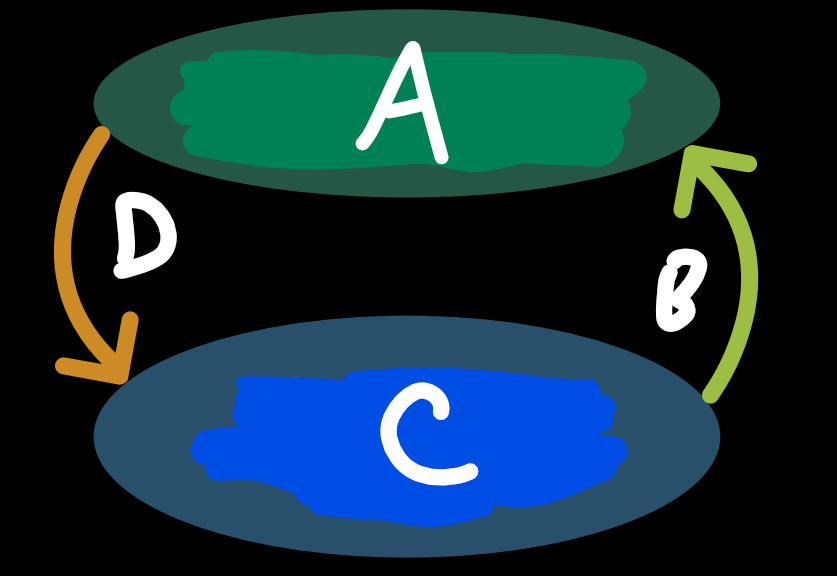5. Cognitive Psych (Metacognition)
1/48
There's no tags or description
Looks like no tags are added yet.
Name | Mastery | Learn | Test | Matching | Spaced |
|---|
No study sessions yet.
49 Terms
What is the general definition of metacognition?
Our thinking about our own thinking, or one’s knowledge concerning one’s own cognitive processes
According to Flavell (1976), metacognition is one’s knowledge concerning one’s own cognitive _________ and ___________ or anything related to them.
Processes, products
What are the two primary components of the metacognitive process, often shown in a feedback loop?
Monitoring and control
What is the process of observing and reflecting on one’s thoughts and cognitive processes? (EX: “Do I know this information?”)
Metacognitive Monitoring
What is the process of using information from monitoring to direct or change one’s behavior or cognitive strategies (EX: deciding to study more)
Metacognitive Control
How do we use the information gained from monitoring our own cognition?
We use this information to control our behavior, such as by changing study strategies.
List three ways in which metacognitive processes are important for learning.
They help identify knowledge gaps, enhance monitoring accuracy, and improve study strategies.
What is the two-step process typically used to study metacognition?
Participants learn some information.
They make a judgment about their learning or memory.
What is a prediction of how likely you are to remember specific information on a future test?
Judgment of Learning (JOL)
What is an assessment of the likelihood that you are almost able to remember something you can’t currently recall?
Tip-of-the-tongue state (TOTs)
What is an evaluation made after a task of how many items were correctly recalled (EX: estimating your exam score)?
Retrospective judgment
In a Tip-of-the-tongue state (TOTs), the memory is considered ________ (you have it) but not _________ (you can’t recall it).
Available, accessible
What was the method used in the Cleary et al. (2010) experiment on TOTs?
Participants studied smells and their names from scratch-and-sniff stickers and were later tested on their ability to recall their names.
What did Cleary et al. (2010) find that people assume when they experience a TOT state for an odor?
They assume they must have previously studied the odor, even if they had not.
According to the theoretical explanation from the Cleary et al. (2010) study, people use TOT states as a signal of what?
Familiarity
Judgments of Learning (JOLs) are based on our ______________.
Beliefs about memory cues
In the context of memory, what is a clue that helps us recall the desired information?
A cue
What are two examples of “less useful cues” that people often mistakenly believe indicate good learning?
Highlight/color-coding notes and the flavor of gum chewed while studying
What did Rhodes & Castel (2008) manipulate in their experiment to study its effect on JOLs and memory?
The font size of the words being studies (one group had 18pt while the other had 48pt)
In the Rhodes & Castel (2008) study, what did participants predict about words presented in a large font?
They predicted that items in a large font would be more memorable than those in a small font.
In the Rhodes & Castel (2008) study, what was the actual effect of font size on memory performance?
Font size did not impact memory performance.
What is the term when people use a cue (EX: font size) to judge their future memory, but that cue doesn’t actually impact memory performance?
Metacognitive Illusion
What is the recommended strategy for improving the accuracy of Judgments of Learning (JOLs)?
Make your JOLs after a delay, not immediately after studying.
Why are immediate JOLs often confounded and inaccurate?
They are confounded by a feeling of familiarity or high retrieval strength from short-term memory.
Why is it important for our beliefs about our memory to be accurate?
When our beliefs about our memory differ from our actual memory, we cannot make effective decisions (EX: about when to stop studying)
Who were the participants in the Dunning, Johnson, Ehrlinger, & Kruger (2003) study on monitoring learning in the classroom?
Students in a sophomore psychology class
What did the students in the Dunning et al. (2003) study do immediately after taking a course exam?
They made a retrospective judgment, estimating how many questions they got correct.
In the Dunning et al. (2003) study, which group of students was also more inaccurate when monitoring their learning?
The students who were struggling in the class (C- to F students)
The finding that low-performing individuals are also poor at estimating their own performance is known as what effect?
Unskilled and unaware effect
In the Carpenter et al. (2013) study, what were the two conditions of lecture delivery that were compared?
Fluent delivery and disfluent delivery
What type of delivery is described as upright and involves the use of eye contact and fluent speech?
Fluent delivery
What type of delivery involves the individual being hunched over and reading from their notes haltingly?
Disfluent delivery
How did lecture fluency affect students’ predictions about their memory in the Carpenter et al. (2013) study?
Students predicted that they would remember more from the lecture that was delivered fluently.
Even though lecture fluency didn’t affect learning, how did it influence students’ ratings of the instructor?
A poorly-delivered (disfluent) lecture led to lower ratings of the instructor’s organization, knowledge, preparedness, and effectiveness.
What is the central claim of the ‘Learning Styles’ theory?
Different students have different modes of learning, and their learning could be improved by matching teaching practices with their preferred mode.
What is the specific idea that instruction matched to a student’s preferred learning style will improve learning?
The Matching Hypothesis
What were the results of the Martin (2010) study that compared two different learning style tests (LSQ and Kolb test)?
There was no significant relationship or common meaning between the results of the two tests.
What did the Martin (2010) study conclude about the utility of using learning style tests like the Kolb test?
Teachers would have as much information if they assigned learning styles randomly to students.
What was the purpose of the experiment conducted by Cuevas & Dawson (2018)?
To test the ‘matching hypothesis’ of learning styles
In the Cuevas & Dawson (2018) experiment, what survey did the 204 college students complete?
The VARK (Visual, Auditory, Read/Write, Kinesthetic) learning styles survey
In the study by Cuevas & Dawson (2018), what was the auditory group instructed to do?
Think about the sounds that make up the words in the phrase
What is the scientific consensus on the ‘Learning Styles’ theory, according to the source materials?
There is no empirical support for the theory that matching teaching to a preferred style improves learning
Students may have learning preferences, but what impact do these preferences have on how well they learn?
The preferences do not impact how well they can learn
What is one reason the myth of learning styles persists, according to the Witherby, Babineau, & Tauber (2022) study?
We assume there is evidence for them simply because they are widespread.
Type of bias in which one’s tendency to favor information that confirms existing beliefs helps explain the persistence of the learning styles myth?
Confirmation bias

In this diagram of the metacognitive process, what is represented by A in the top bubble?
Metacognition (thoughts about our cognition)

In this diagram of the metacognitive process, what is represented by C in the bottom bubble?
Cognition (our learning/memory/mental processes)

In this diagram of the metacognitive process, what is represented by the (B) arrow on the right going from the C bubble (cognition) to A bubble (metacognition)?
Monitoring

In this diagram of the metacognitive process, what is represented by the (D) arrow on the left going from the A bubble (metacognition) to C bubble (cognition)?
Control